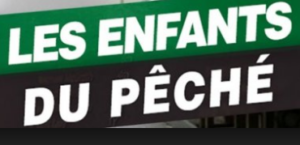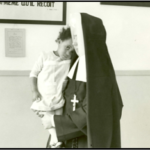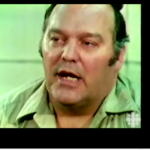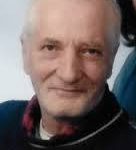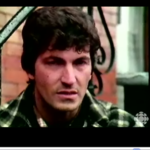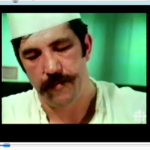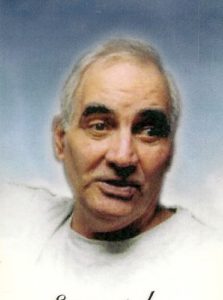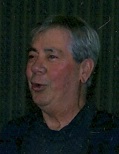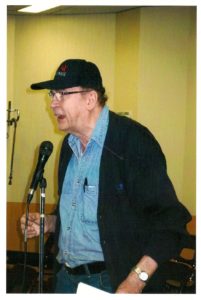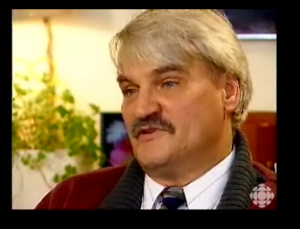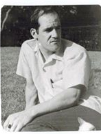Le Berceau des enfants nées Hors mariage sans le consentement des deux diocèses de Montréal et Québec sous le règne de l’Église Catholique de Rome la complicité des Gouvernements et les psychiatres du Québec
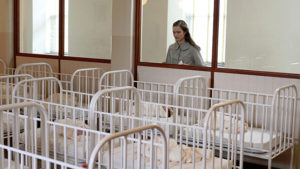
Un Groupe d’enfants née hors mariage sans le consentement de l’église Catholique des deux diocèses de Montréal et Québec de nos Valeurs (Voleur de Vies) ont voulut faire un Génocide 1- Effacer, 2-Écraser, 3-Euthanasier 4-Esclavage 5-Violer 6-Maltraitance 7-Faux Diagnostic 8-Sans Instruction 9-Assimilation 10-Faux nom-11-sans recours devant les tribunaux 12-Complicité de quatre entité 1-Gouvernement du Canada par Santé 2-Gouvernement de la république de bananes du Québec 3-Les religieuses du Québec 4-Les Psychiatres du Québec.
L’émeute du Forum, 17 mars 1955 Maurice Richard
Les orphelins le 18 mars a l’abattoir les bâtards ou enfants du Péché ,les 4 complices le Gouvernement Canadien par Santé Canada Ministre de la Santé 2 ieme Le Québec par le dictateur Maurice Stanislas Duplessis avoir fait le décret 816 nous renfermer nous faire des esclaves pour sauvé le Québec de la faillite 3-Les Révérende Sœurs de la Charité de la Providence avoir accepter conjointement avec tous les autre complices actualisé le contrat du décret 816 avec un cadeau de trois million de dollars a la fin les Psychiatres du Q.bec enboiter le pas avec tous les autres acteur de la dictature de Duplessis.
Les orphelins de Duplessis est le nom donné à des milliers d’enfants orphelins qui ont faussement été déclarés malades mentaux par le gouvernement du Québec et confinés dans des institutions psychiatriques. On considère que c’est le cas le plus important de maltraitance d’enfants dans l’histoire du Canada. Tous ces orphelins seront baptisés orphelins de Duplessis car cela coïncide avec l’époque où Maurice Duplessis était premier ministre du Québec. Les orphelins de Duplessis ont finalement réglé. Ça vous va? Non, sérieusement. Que pensez-vous du « programme national de réconciliation »? Moi, je trouve qu’ils commencent à faire sérieusement suer avec leur national-ci, national-ça. Mais encore? Mis à part la terminologie plus-que-parfaitement horripilante, c’est difficile de dire si on est d’accord ou pas avec le règlement négocié entre le gouvernement et les dirigeants du comité des orphelins. Une moyenne de 25 000 $ par personne, pour les 1000 à 1200 orphelins concernés, ce n’est quand même pas rien (entre 25 et 37 millions $ au total). Mais est-ce assez? Est-ce trop? Les organisateurs du comité auraient voulu au moins le double. Ont-ils raison?oui Nous somme enquête et le droit d’obtenir une vraie justice et réparation c’est ca qui fait trichez les gouvernements $$$$, pour vous montré la collusion existe il couche encore dans le même lit. C’est une forme de bandit légaliser. Tout ce que les bandits avait autres fois les jeux la boisson eux il l’ont maintenant .Regarder les hôpitaux si L’entreprise privé aurais de la surpopulation il serais mit a l’amande et il perdrais leur licence eux non. Tous est permit pour les Gouvernements de bambous donc je me souviens dit le slogan moi aussi je me souviens des bandit licenciées du Gouvernement du Québec.
Les enfants du Péché les bâtards les déchets, nom accepter par les gouvernements les religieux (es) et tous la société Québécoise
Tes orphDuplessis Orphans
|
Orphelins de Duplessis :
historique des faits psychologiques, sociaux et financiers
Note : Pour simplifier la lecture, les nombreuses références bibliographiques n’ont pas été incluses au fil du texte. Cependant, toutes les références utilisées se retrouvent dans la bibliographie se trouvant à la fin du texte.
Durant les années 50, des orphelins ont été internés dans un hôpital psychiatrique suite à un diagnostic de trouble psychiatrique. Vers la fin des années 80, on a remis en doute ce diagnostic. Devenus adultes, ils ont lutté afin d’obtenir une compensation pour leurs droits bafoués. Voici, présenté de façon chronologique et ponctué de faits psychologiques, sociaux et financiers, le chemin parcouru par les orphelins de Duplessis depuis leur naissance.
Des enfants institutionalisés à long terme … un triste parcours vers l’asile
À l’époque où les enfants de Duplessis sont nés, les grossesses hors mariage étaient très mal vues par la société. Ainsi, les femmes enceintes dans le cadre d’une liaison hors mariage devaient donner naissance loin du jugement des proches. Ces femmes, les « filles mères », se rendaient alors dans les grands centres (à Montréal ou à Québec) où se trouvait un hôpital de la Miséricorde. Ces institutions étaient les seules à assurer gratuitement des soins aux « filles mères ».
Duplessis Orphans
Under the leadership of Premier MauriceDUPLESSISin the 1940s and 50s, the Québec government was responsible for a significant number of healthy children being diagnosed as mentally incompetent and sent to psychiatric hospitals. The children were orphans, abandoned children or «children of sin» – born out of wedlock – and living in sanctuaries. The diagnoses were made quickly and for fiscal reasons. Federal subsidies provided more funding to hospitals than to orphanages. As adults, they called themselves the Duplessis orphans, and demanded compensation, alleging that they had been wrongfully diagnosed, arbitrarily confined to psychiatric facilities, abused – sexually and physically – and subjected to lobotomies, electroshock and straitjackets.
As a group, the estimated 2000-3000 Duplessis orphans entered the public arena in 1992, united as the Duplessis Orphan’s Committee (Comité des orphelins de Duplessis) and led by writer Bruno Roy. They accused religious communities, the government and the medical profession of forcing them to submit to prolonged institutionalization for essentially financial, not medical, purposes. The matter quickly found itself before the courts, but the orphans suffered failed attempts at appeal and dismissed criminal charges.
However, with the tabling of a favourable report by the Quebec Ombudsman in January 1997, the debate became more political. The orphans demanded official apologies from the 3 main groups implicated as well as personal compensation. The Bouchard government waited until 4 March 1999 to apologize and offered the group only $3 million with no individual compensation. The group rejected the offer and continued to wait for apologies from the Catholic Church and the Quebec College of Physicians.
In September 1999, Québec bishops rejected the demand for an apology and dismissed any idea of payment. Deadlocked, in the spring of 2000 after a public poll, the movement in favour of the orphans won support from a committee comprising members of the church who had been criticized for adopting the bishops’ attitude and some Parti Québécois delegates, among them former senator Jacques Hébert and former health minister Denis Lazure, who presided over the fight. Under Premier Bernard Landry‘s government, on 30 June 2001 the Duplessis Orphan’s Committee accepted an apology and «fault-free» individual compensation in the form of a lump sum of $10 000 and an additional $1000 for each year spent in an asylum, roughly $25 000 per person for the 1500 people qualified for compensation. The group initially countered the government’s offer with a counter-offer of $50 000 per person, which was refused. When the settlement was reached, the orphans agreed to drop any further legal action against the church.
On 21 December 2006 the Quebec government announced it would pay a further $26 million in compensation to the Duplessis orphans. They were required to sign a waiver declaring they would not take legal action against the Catholic Church in order to receive payment. The Church did not apologize, although on 22 November 2007, Marc Cardinal Ouellet, the Catholic Church’s top bishop in Québec, issued a sweeping apology for historical wrongs committed by the clergy in an attempt to attract Québecers back to Catholicism. The apology made no mention of the Duplessis orphans, prompting a spokesperson for the group to suggest that the apology lacked credibility.
Duplessis orphans call for exhumations: Aim to show children were experimented upon
Saturday, June 19, 2004
Byline: William Marsden
A group of orphans are fighting for the bodies of children to be exhumed from an abandoned Montreal cemetery in a bid to discover whether they were the subject of medical experiments. The group has hired a lawyer to ask a court for permission to dig up the bodies of the children, who were also orphans, and perform forensic examinations.
Rod Vienneau, a spokesman for the orphans, said, «We want to show that these people were the victims of medical experiments such as lobotomies.» There were about 20,000 orphans during the 1940s, ’50s and early ’60s — generally called the Duplessis era, after Quebec premier Maurice Duplessis — who were handed over to various religious institutions.
Thousands were labelled mentally deficient and sent to asylums and other church-run institutions because the nuns running the establishments received larger subsidies for the mentally ill.
The orphans’ group claims children buried in an abandoned cemetery in east-end Montreal may have been victims of medical experiments performed at the old Cite de St. Jean de Dieu insane asylum, now Louis-Hyppolite Lafontaine Hospital.
The group’s lawyer, Daniel Lighter, said, «If there is evidence of this kind of activity, then it would certainly be important evidence in a suit against the government, church and doctors.»
Mr. Lighter said it will take several months to analyze whether there is enough proof to persuade a judge to order the exhumations. Many orphans were sexually abused and forced to work in slave-labour conditions. Some claim as well that many were subjected to medical experiments inside the asylums.
Albert Sylvio, 62, was a Duplessis orphan who lived at St. Jean de Dieu in the 1950s. He said that during that time, he transported about 60 bodies of fellow orphans from the operating rooms to the basement morgue. «I undressed them and washed them and prepared them for burial,» he said. «We put them in cardboard boxes. Some of them were children.» He said the bodies were then taken to the cemetery and buried in unmarked graves.
«There was never any ceremony. Some of these people died on the operating table. Some had been sick and some had committed suicide.» The medical experiments are alleged to have been performed on living orphans.
Paul St. Aubain, another Duplessis orphan, said he was lobotomized at age 18 at a mental hospital in Joliette called St. Michel Archange. «I wasn’t ill,» he said. «They did it without my consent, without my permission. They were experimenting with me. I was a prisoner.» Mr. St. Aubain, 52, said he spent 25 years in various mental institutions run by nuns in Quebec and during that time saw «other orphans who were lobotomized.»
He said doctors also gave him electroshock therapy and numerous psychiatric drugs. Mr. St. Aubain now lives on welfare in Joliette. He cannot work. A Quebec law passed in 1942 allowed the nuns to sell unclaimed bodies to medical schools for $10. Many dead orphans, whose names and identities had been changed or erased, were dissected. What was left of their bodies was buried in cemeteries such as St. Jean de Dieu.
One government registry indicates there were about 2,000 bodies buried at the St. Jean de Dieu cemetery, which locals called the «pigsty» because it was next to a hog farm owned by the nuns. At least 42 were children.
How many orphans ended up as cadavers for anatomy students is not known because hospital registries have disappeared from government archives or were never properly filled out.
The practice of selling unclaimed cadavers to medical schools continued into the 1960s. In 2002, a group of 1,100 orphans settled with the government for about $25-million for wrongfully placing them in mental institutions. Other Duplessis orphans, who had been placed in religious institutions and claim they were sexually abused, are still fighting for compensation.
—-
«The hottest places in hell are reserved for those who in times of moral
outrage retain their neutrality.» (Dante, Inferno) Or, to put it more
clearly: You are either part of the problem or part of the solution.
The dye is cast.
Photos des Orphelins de Duplessis



André Marteli

Hervé Bertrand Henry Barnabé Jacques Roger
Jacqueline Pearl Rathier Fernand Deveault Méril Romain
Conrad Vaillancourt Matin Hurtibise Robert Henrichon

Jean Guy Élie Émile Quenville Alphonse Lavoie Jean Messier
Jacques Albert Sylvio Albert Day Onézime Legault
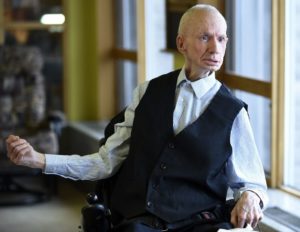

Floribert Languis
